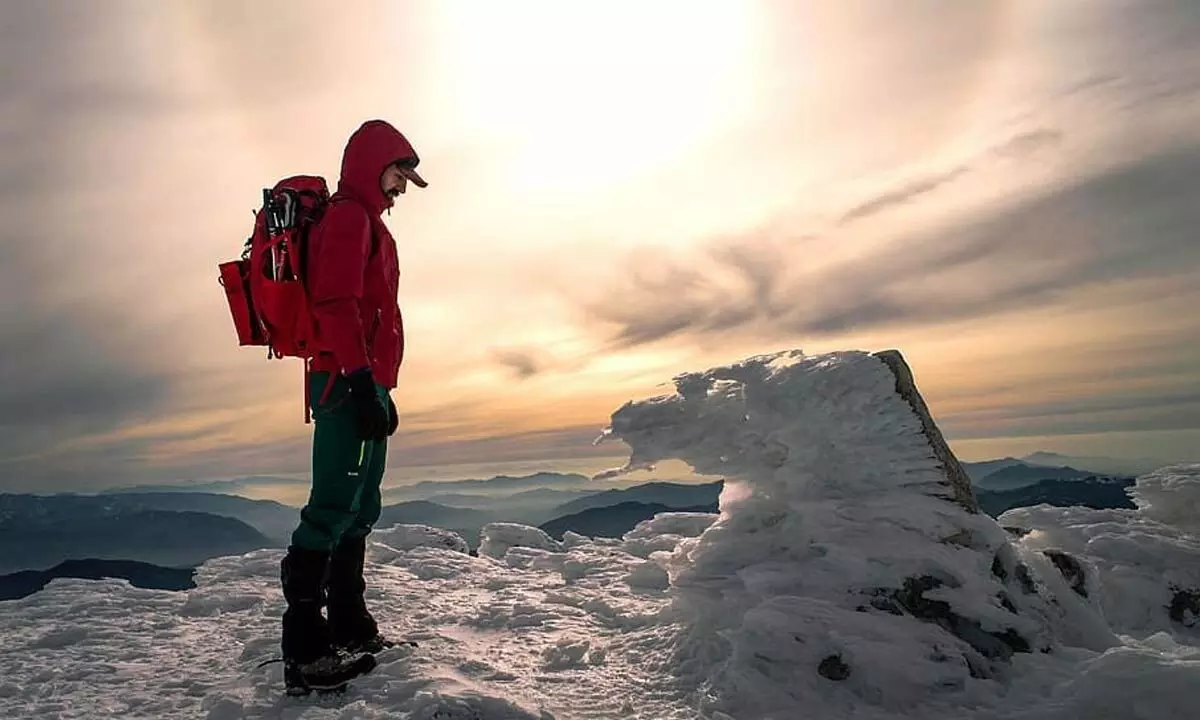Tips to keep in mind while travelling in extreme conditions

Tips to keep in mind while travelling in extreme conditions
Trekking in the winter and the summer is a totally different experience
Trekking in the winter and the summer is a totally different experience. It's important to prepare for your hikes in preparation because it might come in handy whenever and wherever you are. Studying a few winter hiking guidelines can help you get ready for any hike you plan to go on while staying warm and safe. Whether you're walking through the snow outside or simply admiring the scenery, this winter hiking advice will surely make your experience enjoyable. All of the factors that contribute to a trek in the great outdoors being secure can be met with the right equipment, tips, clothing, and attitude for winter hiking.
"Cold weather might be a problem on any hiking trip at any time of year, not just in the dead of winter. Depending on your location and the area you're hiking in, you may come across chilly weather at any time of year, which might make your journey uncomfortable or, worst yet, result in a significant injury or disease," says Gayatri Mohanty.
Check the weather and trail conditions in advance
Being aware of the weather is one of the most essential winter hiking tips because it can affect the trail by covering it with new snow, which can be quite confusing while you are hiking. Knowing the weather conditions also makes it easier to avoid hiking when there are strong winds, chances of heavy snowfall, or poor visibility. It is therefore advisable to be aware of the anticipated temperatures and wind speed ahead. You can always hike safely in the snow if you follow our advice.
Maintain constant hydration
When trekking in the cold, always make sure you have an insulated bottle and a bottle sleeve with you. If you do this while hiking in bitterly cold weather, the water won't freeze. If you forget to bring an insulated bottle on your trek or don't have one, you can also use a spare sock or wrap the water bottle in a towel to keep it warm and insulated.
Carry the proper winter hiking equipment
If your upcoming trip includes hiking paths, you must pack the appropriate winter hiking equipment. When hiking, wearing the appropriate shoes, bag, jacket, and even jeans can make a big impact. The most important thing to remember when trekking in the snow is to keep yourself warm. You can begin by donning a base layer, followed by a fleece jacket that serves as your intermediate layer, and finally a jacket or down jacket that will aid in insulation and safeguard your body from the cold. Softshell trousers are typically advised when trekking in the winter because they are great at maintaining body heat at all times and shielding you from severe winds and snow.
Pack extra equipment
A fire starter, first aid kit, pocket knife, emergency blanket, waterproof matches, and a waterproof backpack are a few other items you can bring with you on your trek. Bringing an extra kit on your hike will always come in handy and be beneficial for surviving in adverse weather. When you are trekking in snow, all of these things will make a huge impact. Since trekking in snow can be slick and slushy when the snow is melting, they also give you protection and a better grip on the snow.
For your winter hike, bring snacks
During your hikes, it's critical to keep yourself hydrated and energised at all times. Your body often needs twice as many calories to stay warm and hydrated while trekking in the winter as it does at other times of the year. In order to keep energised at all times, be sure to pack yourself some meals that are both very nutritional and protein-rich. Organic pumpkin seeds, granola bars, protein bars, and even your own homemade trail mix are all suitable for carrying as cold-weather snacks.
Consistently keep your feet warm
While snowshoeing, it's crucial to keep your feet warm. Make sure you include several pairs of wool-based hiking socks that will keep moisture off of your damp skin. In the event that it gets wet while you're hiking, it dries rapidly and also aids in heat insulation. When trekking, snow is kept off of your feet at all times by donning hiking boots that go up to the ankle. A pair of gaiters, which save your feet from getting buried in the snow, is another item you can get. As you'll be spending a lot of time in your boots during your winter excursions, it's ideal to wear comfy ones.
Hike during the daytime
When we hike on our trails in the summer, we often try to stay out of the sun. In contrast, hiking in the winter is completely different. To feel the warmth of the sun in the chilly months, we would basically do anything. You'll be able to stay warm and have a better time hiking if you plan your hikes for when the sun is out and blazing brightly in the sky. Due to the drop in temperature in the evening, it is also recommended that you schedule your hikes so that you begin early and finish before the sun sets.













